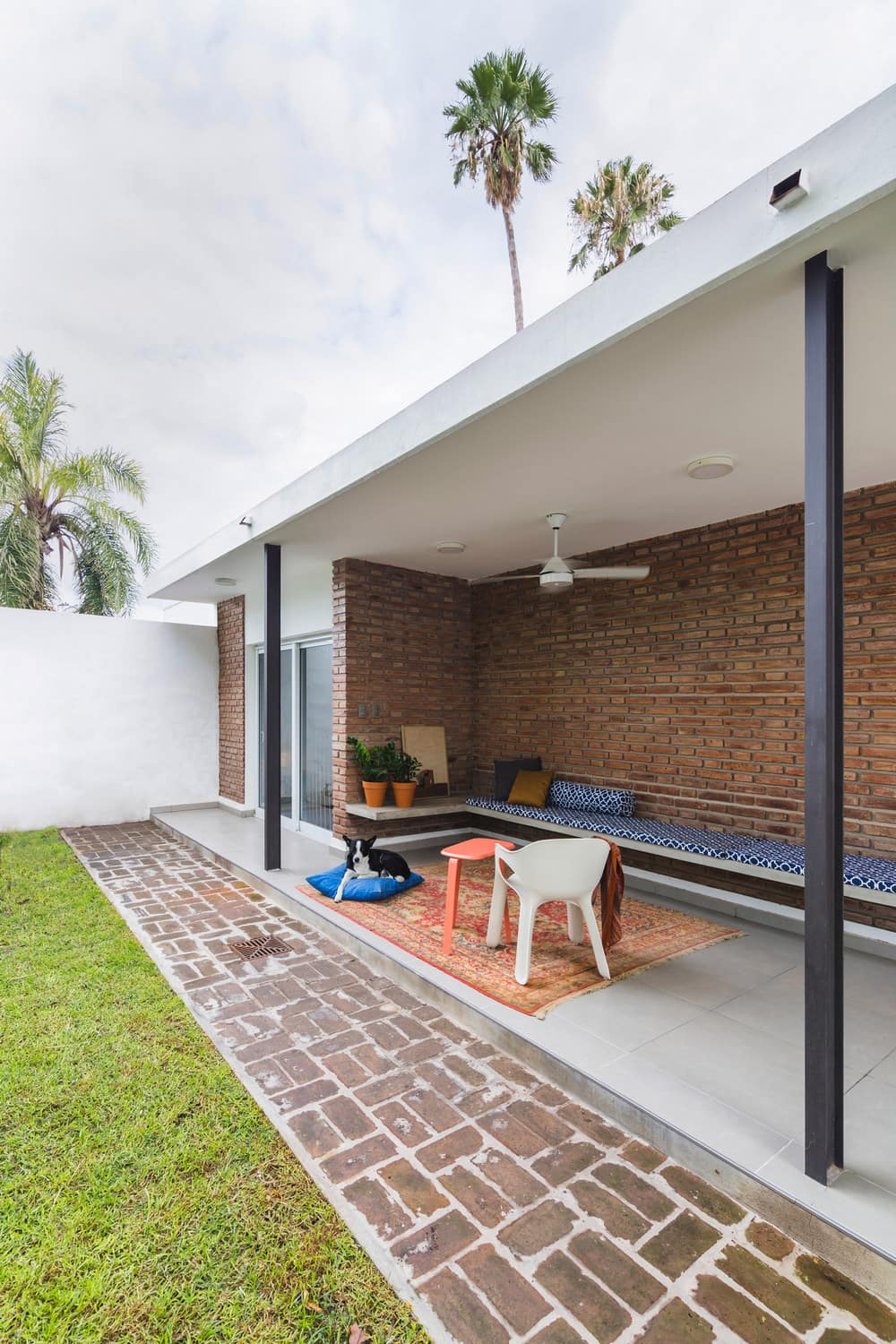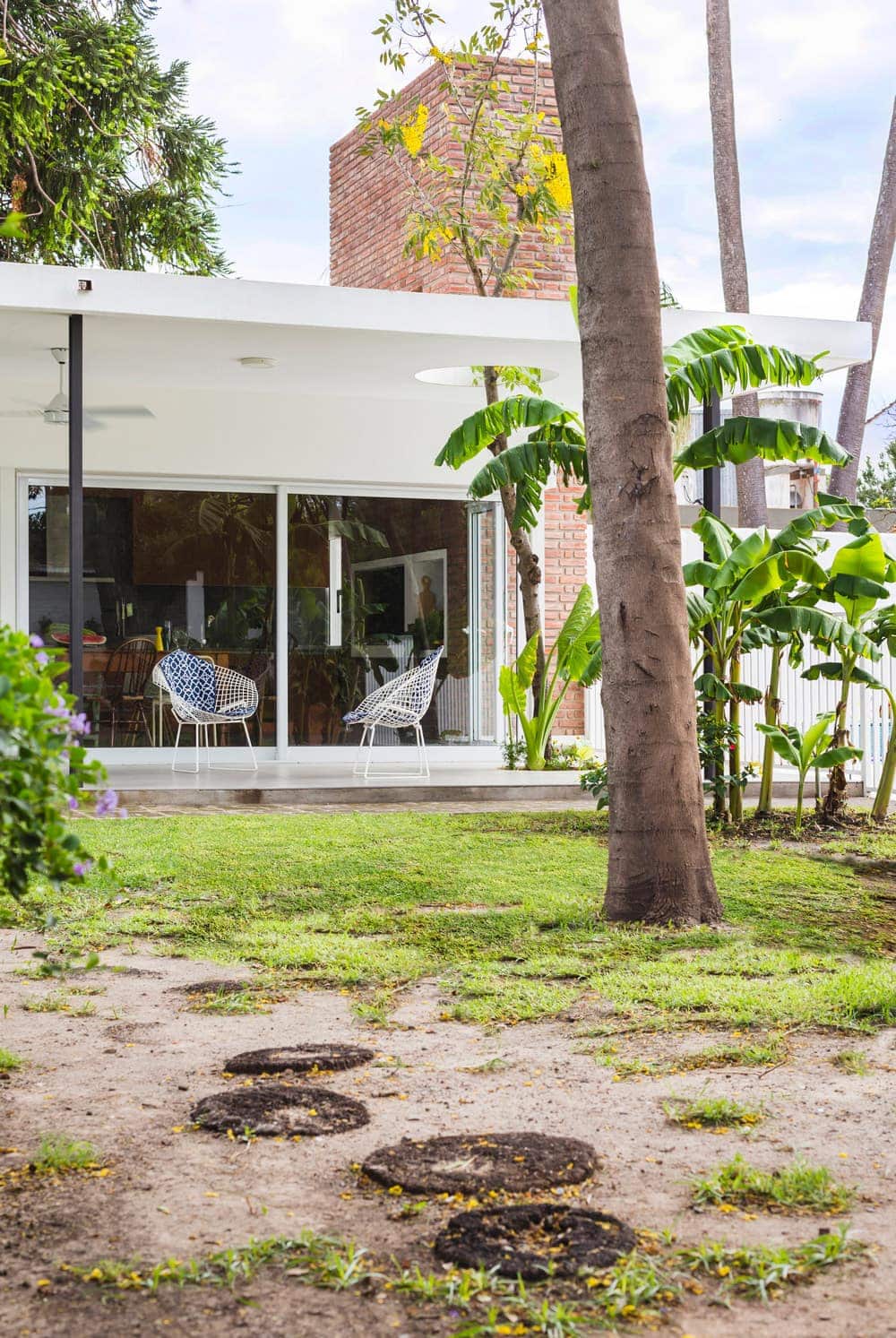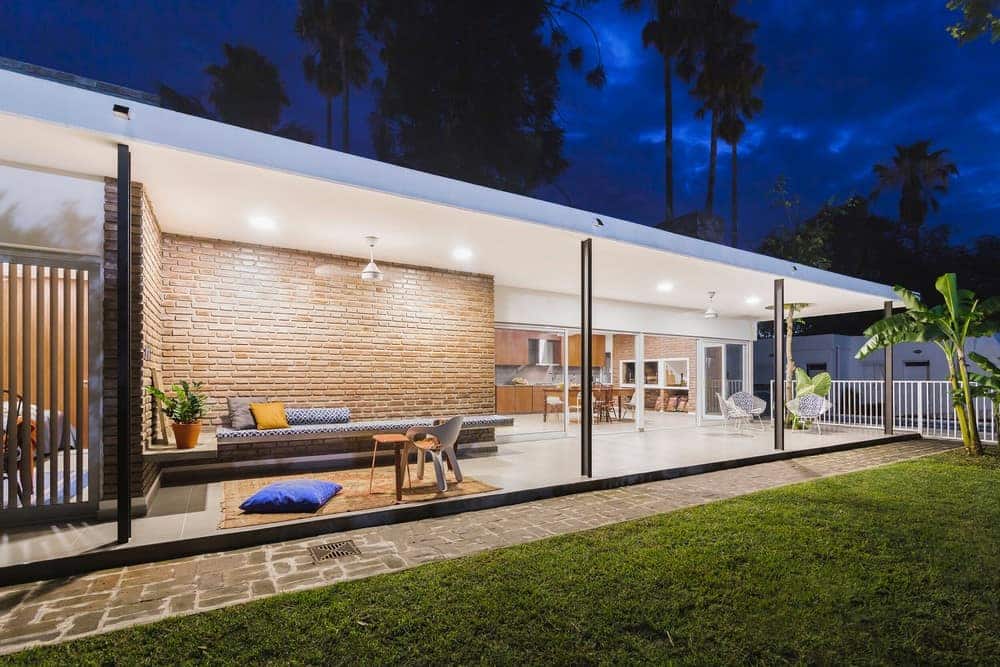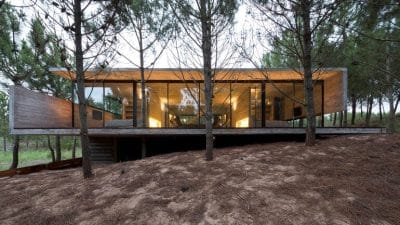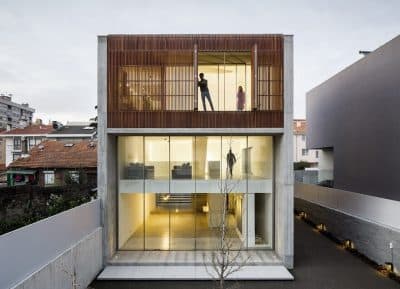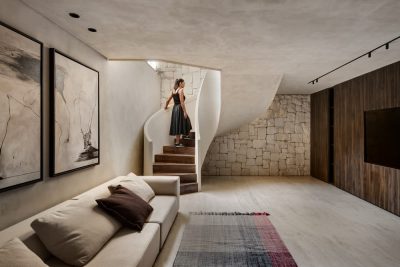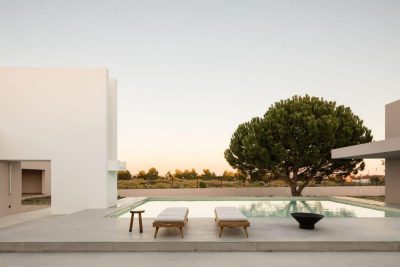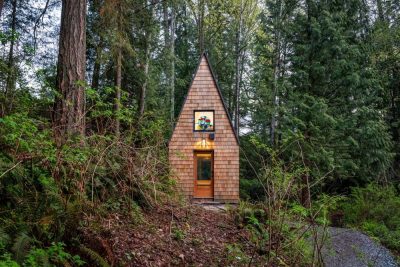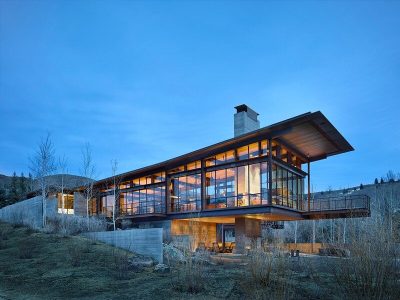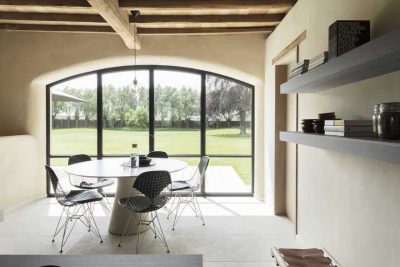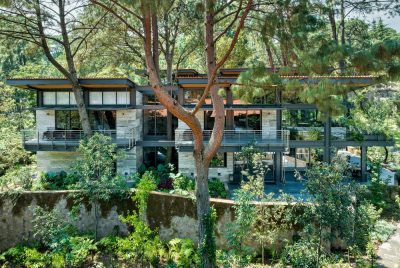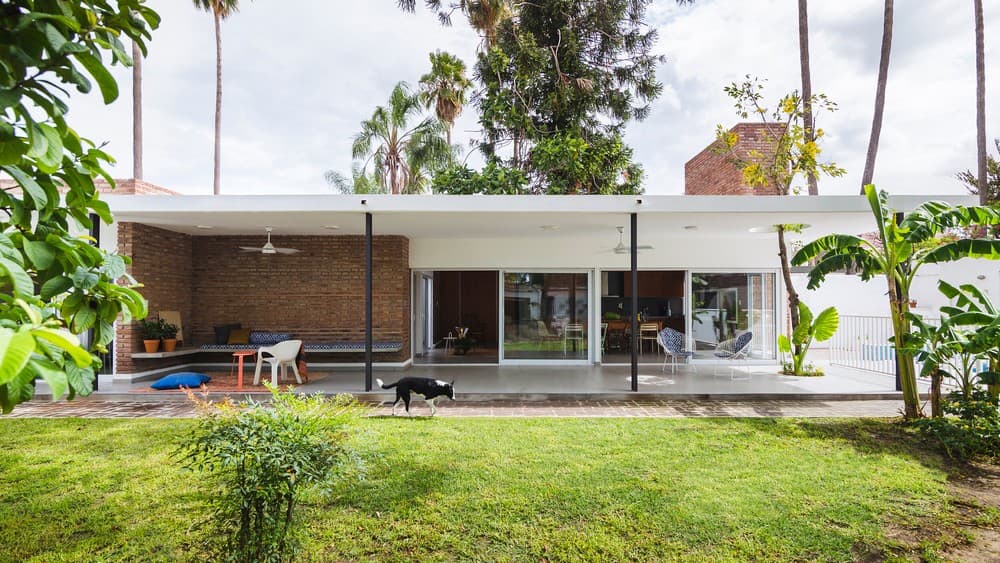
Project: El Quincho Guesthouse
Architecture: Colombo and Serboli Architecture
Project team: Lalo Carrillo, Matteo Colombo, Andrea Serboli, Adán Yenerich, Rodrigo Schiavoni
Site direction: Gisela Filippi
Styling and art direction: SY Architectos and Eduardo Carrillo
Location: Córdoba, Argentina
Area: 140 m2
Year: 2020
Photo Credits: Ramiro Rosa
Text by Colombo and Serboli
In Argentina, having asado (cooking meat on embers or charcoal, similar to barbecue), more then a culinary tradition is an art, or a religion. Basically it’s a ritual, a family business, a social event. Argentinians use the word quincho to define a construction made expressly to prepare and enjoy good asado.
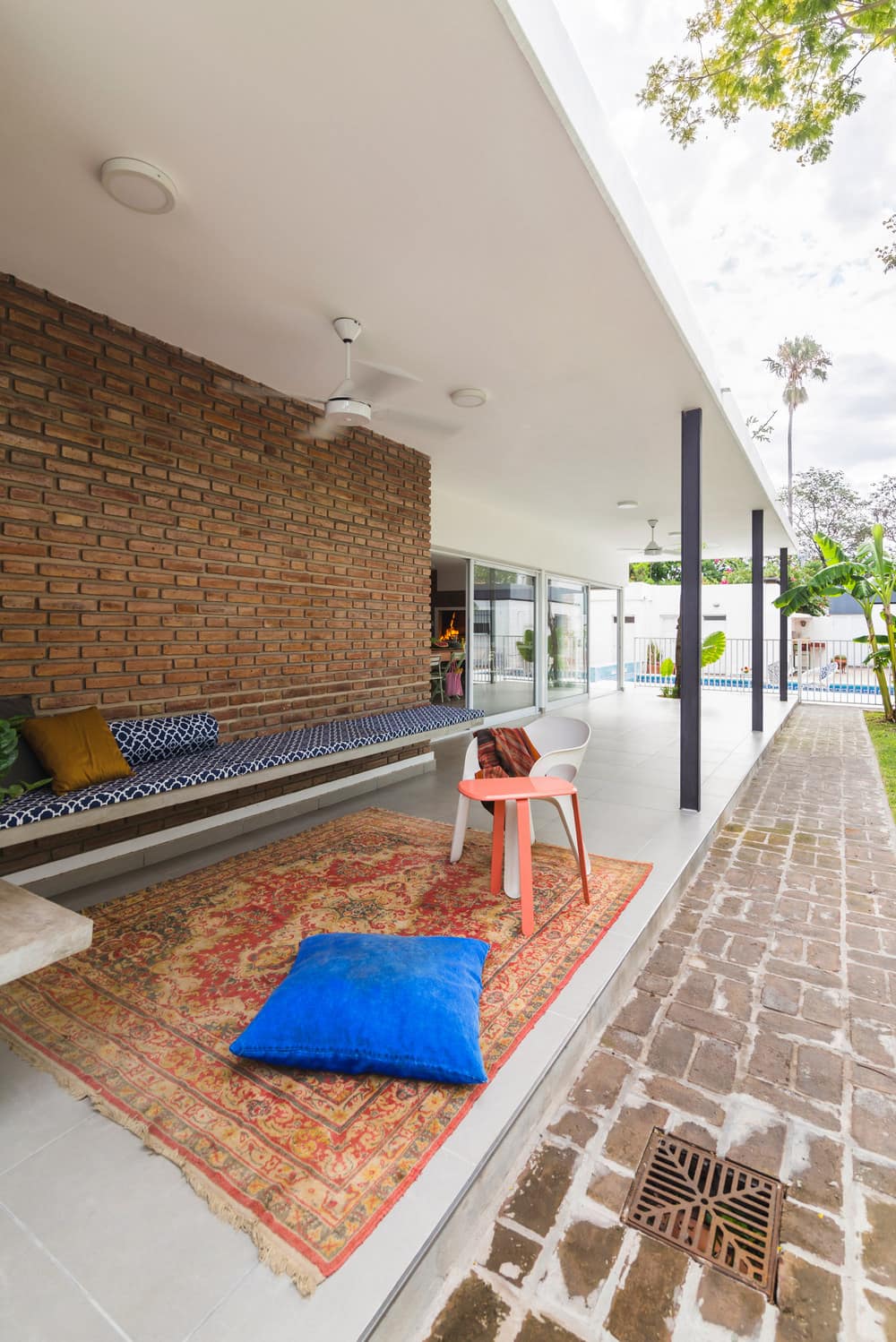
When our clients bought the property next door to their ’60 existing house in the Córdoba countryside, they decide to commission the construction of a new building, El Quincho Guesthouse. The wish was to have a big dining room for family and friends, visually and physically totally open to the garden and pool but with the chance to close it completely. In addition, a double bedroom for guests, with a bathroom, had to be designed.
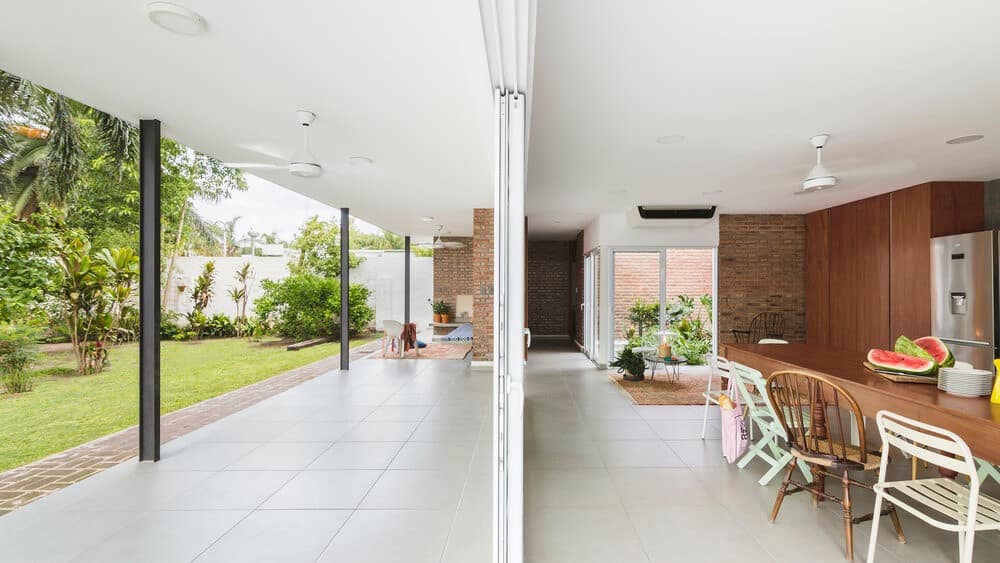
Formally, this new pavilion had to establish a conversation with the white-painted brick walls forming the existing mid-century house. We chose to recall the solid brick volumes of the white original building in the new construction, this time in natural brickwork, like in the asador itself, a thick but slender chimney-like volume clearly expressed on the side of the building.
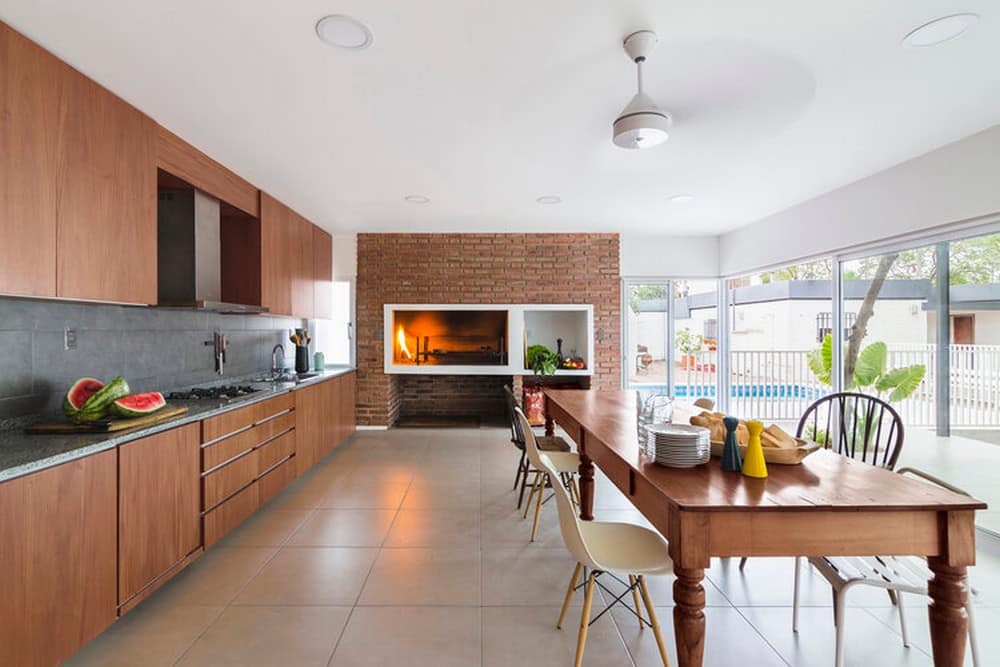
A pristine white, cantilevered roof contrasts with the walls, wrapping around the bricks block, forming a porch that blurs the transition between indoors and outdoors space and gives shelter from the copious summer rains. A Cassia Fistula tree happened to be on the corner of the porch area, so the team made the decision to punch two round holes, one on the floor slab, another in the roof itself, allowing the tree to remain, grow through the roof and blossom above the roof its bright yellow flowers in summer.

The plot had been abandoned for decades, so other grown plants and trees have been carefully kept during the site works and taken in account in order to make the most of them.
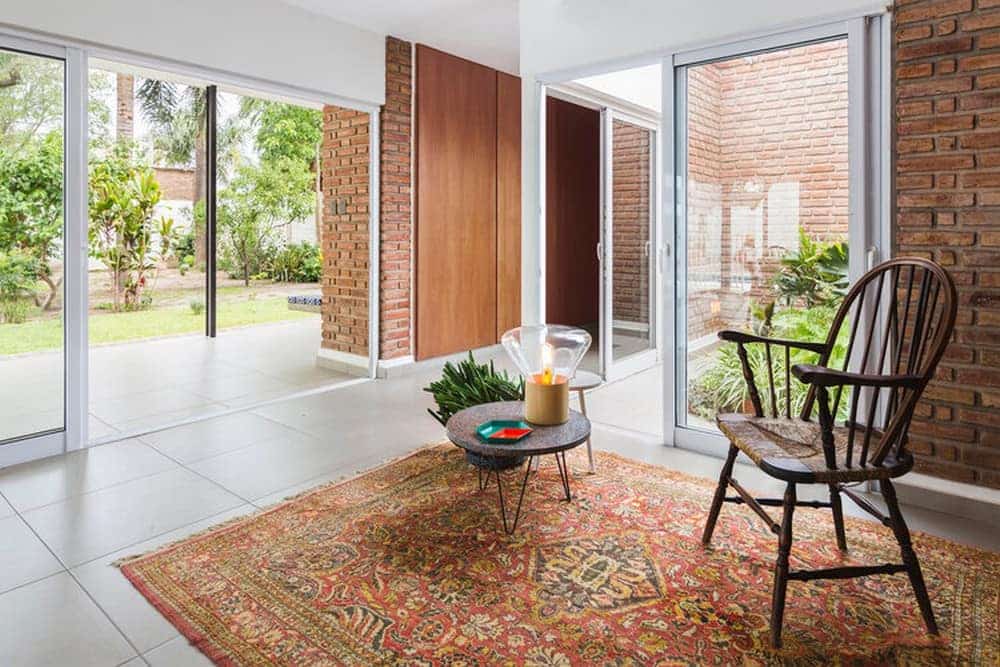
Another architectural element in the gallery is a corner seat, cantilevered in concrete within the nook of the facade brick wall. This cozy corner is thought to contemplate quietly the garden, drinking mate, the national drink.
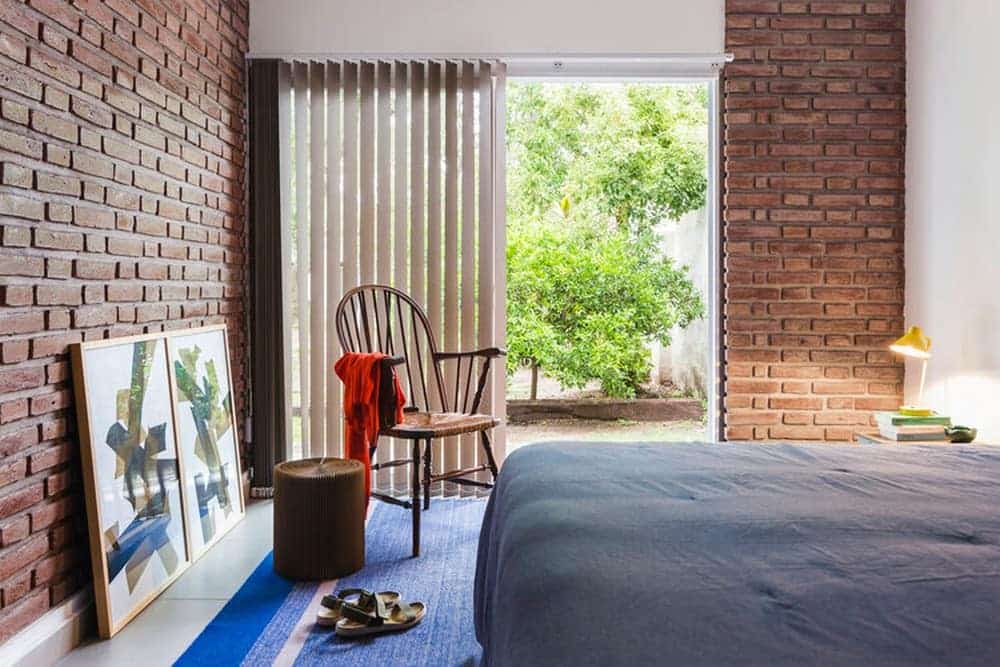
On the inside, a plant-filled patio divides the dining area from an en-suite with a spacious guest bedroom and an intimate bathroom with diagonal views on the patio. Taking advantage of the one-story building, the shower has a light well placed right on top of it. The bedroom volume protrudes towards the garden to add intimacy to this more private part and to have an even closer relation to the luscious green outside.

On the other side, the existing pool had to be divided from the new building for safety reasons, given the family has one kid with special needs. A simple white metal fence was placed for this purpose.
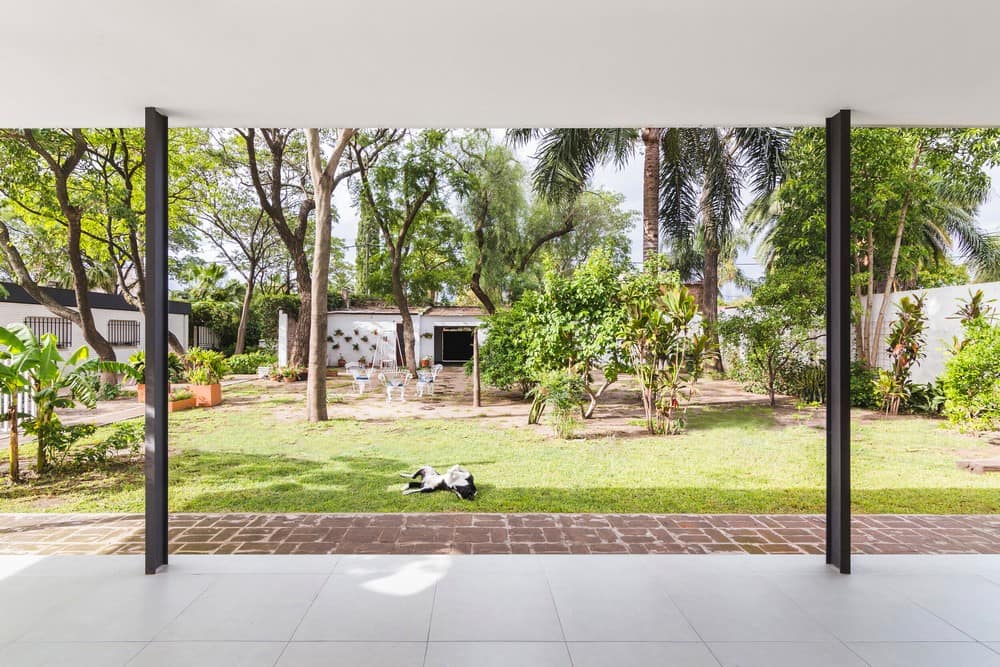
One of the project’s key pieces is the asador, the brick oven where the Asado is made. The family final choice was to have it as part of the dining (rather than outside) in order to have the cooking family member enjoying the same space as the rest. The asador cooking space has been divided into two to allow one side for a pizza and bread oven.
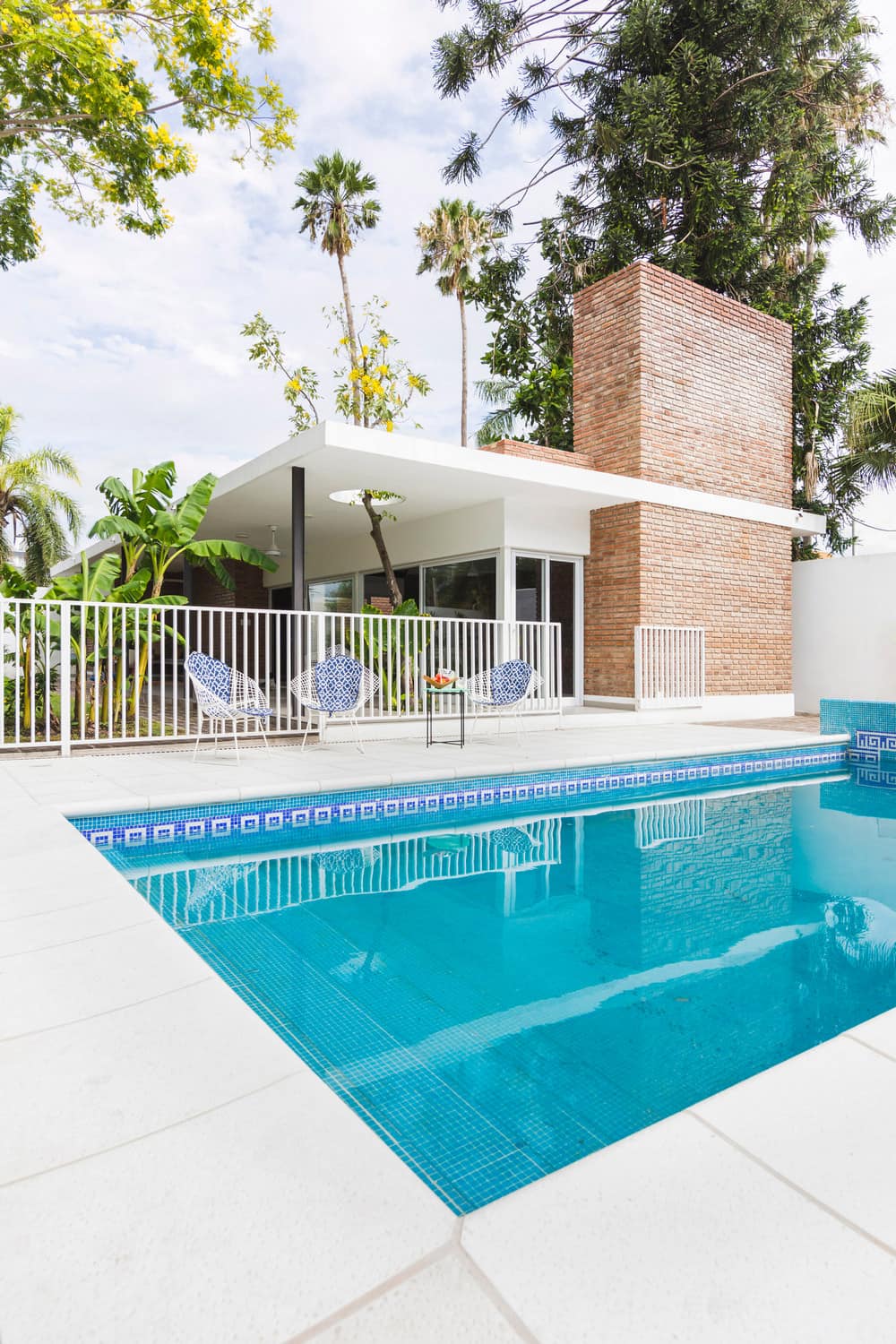
The big kitchen has everything for the food preparation: wide countertops and plenty of cabinets and storage space. All the kitchen doors are in cedar solid wood, adding its very warm finish to the room. The same solid timber has been used for all the doors, storage and panelling in the rest of the building.
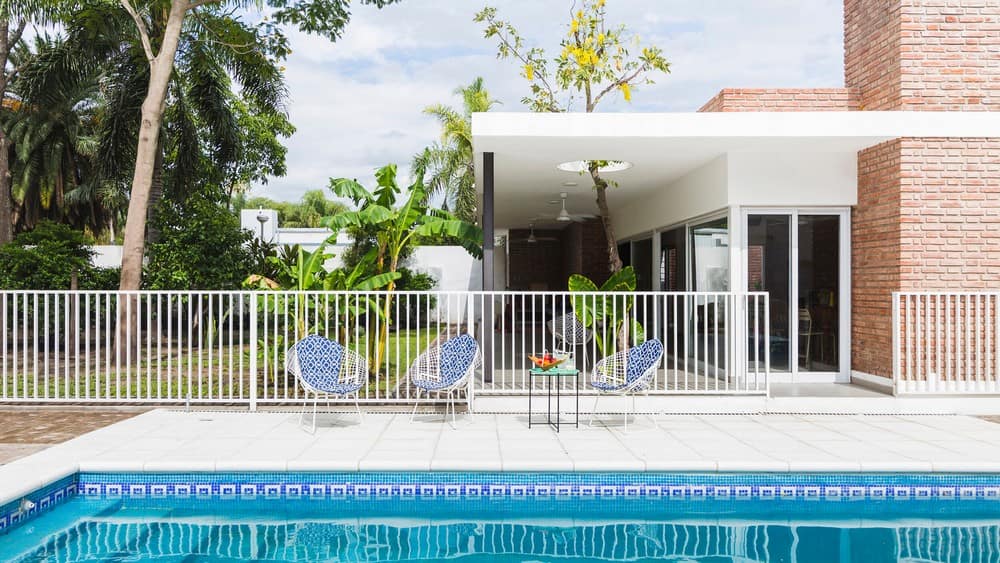
The furnishing mixes vintage family pieces, as well as new designs. Four original Diamond chairs by Harry Bertoia, in the house since the ’60, were restored, provided with new cushions that matched the ones of the corner gallery seat and placed on the poolside. An old, big, solid wooden table is the centre of the dining room, surrounded by Windsor chairs also belonging to the family for decades, along with other new chairs. Family heritage is also the Persian rugs used both indoors and outdoors. Abstract art pieces by Rodrigo Schiavoni (one of the architects collaborating in the project) give the finishing touch.
